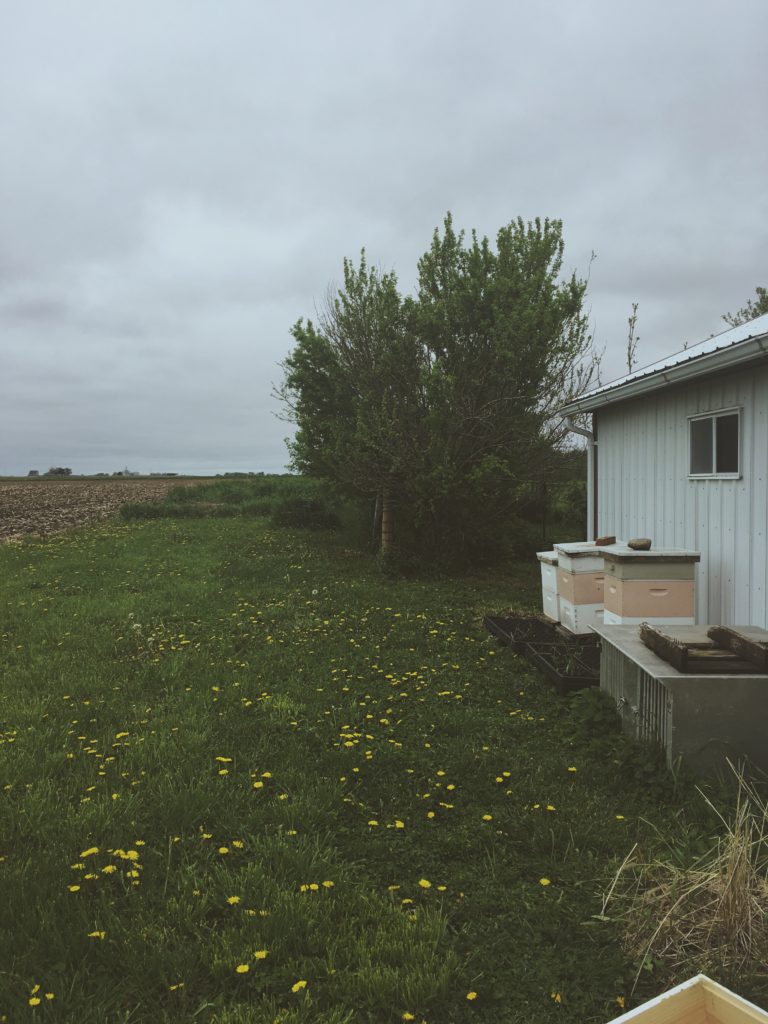05/19/2019
“Well if you have a queen and a group of independent-minded bees that split off from the rest of the hive and look for another place to live, then you’ve got a swarm.”
– August from The Secret Life of Bees by Sue Monk KIdd
So, we saw the bees!

It was way more emotional than I was expecting. I was truly taken aback by everything. The beekeeper was Mark Tintjer, and his whole property was absolutely stunning. The best part, in my opinion, was the location. Around the back of the house were these intense hills. There were just so many trees and as my classmates have heard one of the most jarring things about the Iowa landscape has been the lack of trees.
Back to the bees. On the ride back from the bee farm I was thinking about the colony and how it functions. The worker bees, nursing bees, and the queen bee are all females. The bees work their whole lives, endlessly, building cities of honeycomb. Perfect hexagons. How is that in nature animals and insects find structure and order to make these strong functioning infrastructures? What can we learn from the bee? How are our infrastructures set up? Do they help or hinder our honeycomb cities?
I have been on an avid search for diversity. Even if I haven’t found exactly what I am looking for, there has been a different talk of diversity happening around me. That is crop diversity. In Iowa corn is number one. It shapes the way farmers grow, but unfortunately it keeps them on a narrow path from which they rarely deviate. The biggest critique of the Iowan farmer is their lack of diversity in crops. For the bee to thrive they need diversity. Luckily for the Tintjer bees, they have plenty of foliage to choose from; lilac trees, a home garden, dandelions, and the few flower patches around the house. Because the diverse nature of the bee diet, they are able to produce specific honeys, and offer an array of products.

If farms were to seek more crop diversity they could find a number of advantages, and open their narrow field of corn farming into something way more expansive. A good example of crop diversity takes place right on the Neubauer family farmer. Denny and Scott Neubauer have started growing sweet corn (very different from the bitter grain corn that Iowans are know for) and green peas. One of the biggest advantages to this crop diversity, or crop rotation, is that essentially it gives the soil a break. When a farmer grows the same thing over and over it pulls all of the nutrients out of the soil. When something different is grown its gives time for the soil to restore itself and the new crop could even offer some new nutrition.
If the bees taught me one thing, it is to continue seeking out diversity. Diversity in crops offers great environmental benefits! If this is a trend that continues I am sure it could have big economic impact as well. I also see this diversity possibly branching out into animal nutrition by giving farmers options besides just corn to feed to the livestock.
